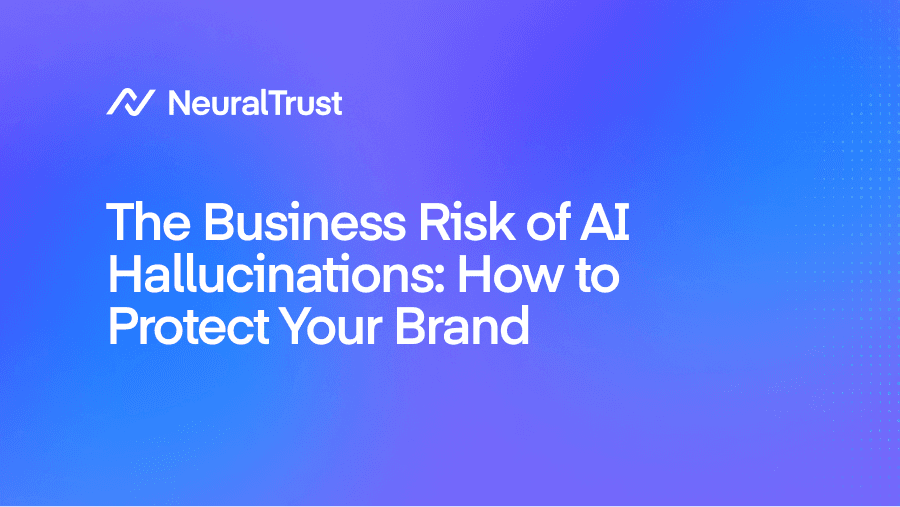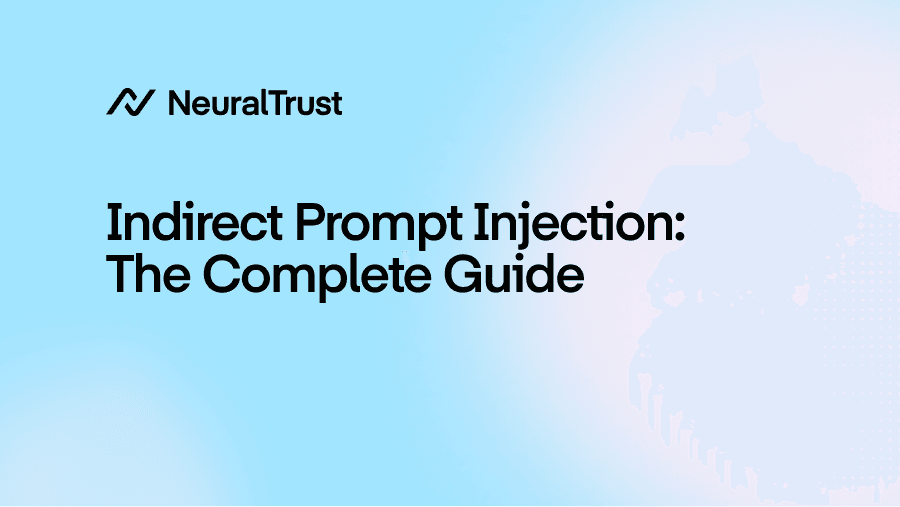Generative AI models are designed to be confident, even when they’re wrong.
From chatbots inventing product specs to virtual assistants citing fake legal precedents, AI hallucinations have already caused real-world embarrassment, financial loss, and legal trouble. And as enterprises embed LLMs into customer support, search, and decision-making workflows, the risks are only getting worse.
This post unpacks the business implications of AI hallucinations, why they happen, and how your company can prevent them from damaging your brand or bottom line.
What Are AI Hallucinations (and Why Do They Happen)?
AI hallucinations occur when a large language model (LLM) generates false, misleading, or entirely fabricated content that appears plausible, but isn’t grounded in factual data or sound logic. These aren't just minor inaccuracies, they're confident, articulate misfires that often go undetected until it's too late.
Why do LLMs hallucinate?
There are several contributing factors:
- Statistical Prediction, Not Truth-Seeking: LLMs like GPT-4 or Claude don’t “know” facts. They predict the next word based on statistical correlations, not factual correctness.
- Overgeneralization from Training Data: When models encounter edge cases or ambiguous queries, they may extrapolate from unrelated patterns, leading to incorrect responses.
- Creative Completion Tendencies: Models often attempt to “fill in the blanks” when they sense incomplete prompts. This is great for fiction, but dangerous in business contexts.
- Contextual Drift: In longer conversations or interactions, models may subtly shift away from initial grounding, increasing the chance of errors.
- Poor Prompting or Fine-Tuning: Misaligned prompts or insufficiently constrained models can introduce unintended behavior.
In short, hallucinations are an inherent risk of using probabilistic models in deterministic domains.
Real-World Examples of Hallucinations Hurting Businesses
Hallucinations aren’t theoretical or technical bugs. They’re business threats already causing tangible damage.
Legal Hallucination (Mata v. Avianca Airlines)
In a now-infamous case, a lawyer used ChatGPT to generate legal citations, only to discover that the model had completely fabricated court decisions. The firm faced public embarrassment and judicial sanctions.
Helpdesk Chatbot Hallucinates Refund Policy
A Canadian airline’s chatbot promised a refund to a customer based on a policy that didn’t exist. A court later ruled the airline was liable, stating that AI-powered agents are extensions of the company’s voice.
NYC AI Chatbot Provides Incorrect Legal Guidance to Businesses
New York City’s AI chatbot misinformed small businesses, wrongly stating that employers could keep tips and landlords could discriminate based on income. The incident raised concerns about the dangers of deploying AI in legal and regulatory advisory roles.
Why AI Hallucinations Are a Business Risk
Even a single hallucination can have wide-reaching effects. The risks span multiple departments, from legal to marketing to finance.
- Brand Trust Erosion Your AI is part of your brand. When a customer-facing model delivers incorrect information, it erodes credibility, not just in the AI, but in your entire business. Trust is easy to lose and hard to regain.
- Legal Liability Incorrect AI-generated outputs about pricing, contracts, HR policies, or legal/medical matters can land you in hot water. Companies are being held accountable for the actions of their AI agents, even when the outputs are unintentional.
- Financial Impact Hallucinated financial data or market insights can directly lead to poor business decisions, rejected transactions, incorrect billing, and revenue loss.
- Compliance Failures Under regulations like the EU AI Act, Colorado’s AI Accountability Act, or HIPAA, AI outputs must meet standards of fairness, accuracy, and explainability. Hallucinations can easily put your systems in violation.
High-Risk Use Cases That Must Be Monitored Closely
Some use cases carry a disproportionate level of risk. Hallucinations in these contexts can go from inconvenient to catastrophic.
- Customer-facing chatbots: The front line of your brand. Errors here are publicly visible.
- Automated documentation generation: Mistakes in contracts, product documentation, or policies create legal and compliance issues.
- Internal knowledge assistants: HR, Legal, and Finance bots must not invent answers that influence sensitive business decisions.
- Search + RAG interfaces: Hallucinated citations can undermine the whole point of grounding.
- Autonomous AI agents: Systems that take actions based on faulty information can create cascading business failures.
How to Protect Your Brand from AI Hallucinations
You can't eliminate hallucinations completely, but you can make them extremely rare and manageable.
Implement Guardrails with TrustGate NeuralTrust’s TrustGate applies customizable filters to LLM output. It ensures content is grounded, validated, and policy-compliant, blocking hallucinated or unauthorized responses before they reach users.
Use Retrieval-Augmented Generation (RAG) with Verification RAG improves factual grounding by injecting relevant documents into the context window. But grounding alone isn’t enough. Always apply response validation, confidence scoring, and domain constraints to verify model outputs post-generation.
Monitor Outputs with TrustLens Observability is critical. TrustLens enables you to track hallucination patterns, detect behavior drift, and flag anomalies in real-time, offering operational visibility into AI behavior at scale.
Perform Red Teaming with TrustTest Simulated adversarial testing reveals edge cases, prompt injections, and failure points. TrustTest enables organizations to proactively identify hallucination scenarios and refine model behaviors through targeted stress tests.
Require Human-in-the-Loop for Sensitive Tasks Don’t let AI operate unchecked in high-stakes environments. Implement escalation workflows and require human oversight for any output related to healthcare, finance, employment, or law. Find out more in our AI Compliance Checklist.
How to Detect Hallucinations Before Users Do
You should never rely on end-users to catch hallucinations. Proactive detection is key.
- Ground truth comparison: Use vector similarity to compare model responses with known authoritative sources.
- Confidence scoring: Lower-confidence outputs can be flagged or suppressed automatically.
- Feedback audits: Monitor user sessions for confusion, repeated clarifications, or contradictory interactions.
- Red teaming evaluations: Regularly run hallucination tests as part of your QA or LLMOps pipeline.
Prevention starts with visibility and a system for catching mistakes before they go live.
How to Communicate AI Limitations Clearly
Even with guardrails and monitoring, some hallucinations will slip through. Setting the right expectations helps mitigate damage.
- Label AI-generated content: Make it clear to users when they’re interacting with an AI.
- Disclose limitations: Add disclaimers about data confidence, recency, or authoritative sources.
- Provide human escalation paths: Let users switch to a human when unsure, especially in complex or regulated interactions.
Clear communication isn’t just good UX. It’s a liability shield.
The Business Case for Investing in Hallucination Mitigation
AI hallucinations can be costly. But many companies still treat them as rare edge cases instead of strategic risks. That’s a mistake.
By investing in prevention, detection, and communication systems, companies can:
- Reduce legal exposure
- Improve user satisfaction
- Maintain regulatory compliance
- Strengthen brand trust
- Unlock more AI use cases with confidence
The ROI of robust hallucination mitigation isn’t theoretical. It’s real, and measurable.
Bonus Section: Is Hallucination-Free AI Even Possible?
While hallucination rates can be dramatically reduced, 100% accuracy remains an elusive goal, especially in open-ended or creative tasks. However, you can get close to “business-grade reliability” by layering the right technologies:
- Constrain outputs to verified knowledge bases
- Use fine-tuned models for specific domains
- Apply real-time validation pipelines
- Combine symbolic and neural reasoning where needed
The question isn’t “can we eliminate hallucinations?”. It’s “how low can we drive the error rate for our specific use case?”
Final Thoughts: Hallucinations Are a Risk, But They're Manageable
The myth of “smart AI” is fading fast. Business leaders now understand that LLMs are powerful, but imperfect. And when they get things wrong, the consequences can be far more than technical.
Whether you're deploying internal copilots or customer-facing bots, you need a hallucination mitigation strategy baked into your LLMOps stack. That means guardrails, observability, red teaming, and human oversight. All working together.
At NeuralTrust, we help enterprises secure and govern their AI deployments with the right combination of controls, tooling, and strategy. Because when your AI talks, your brand is on the line.



